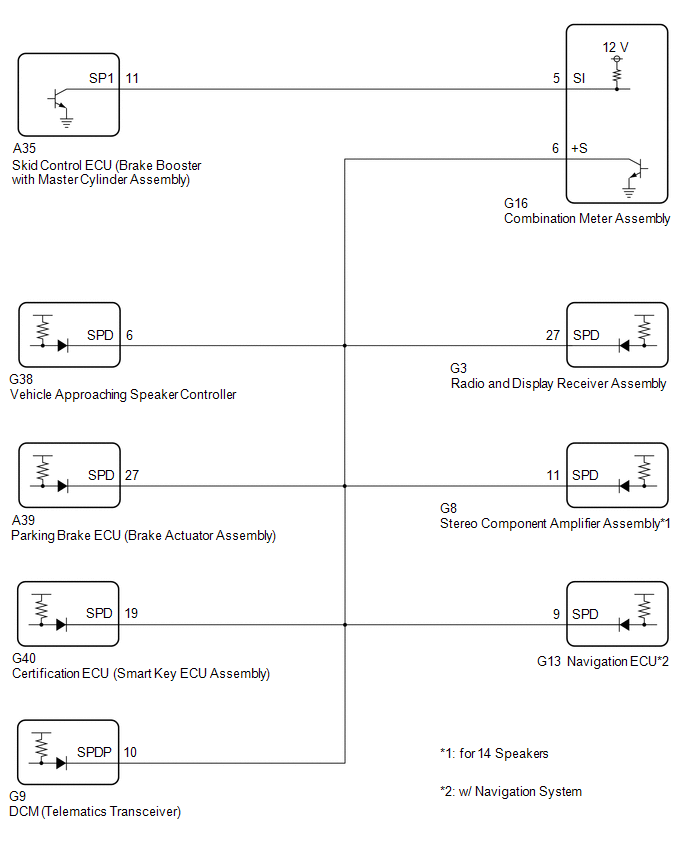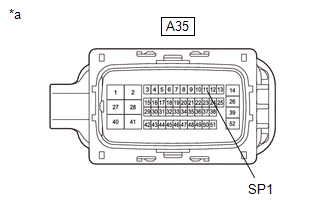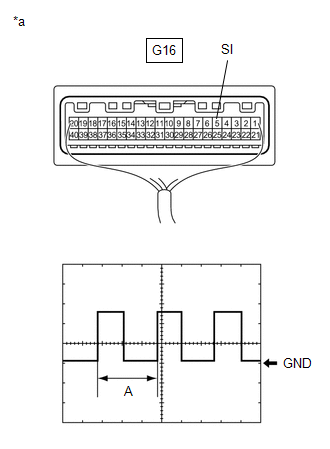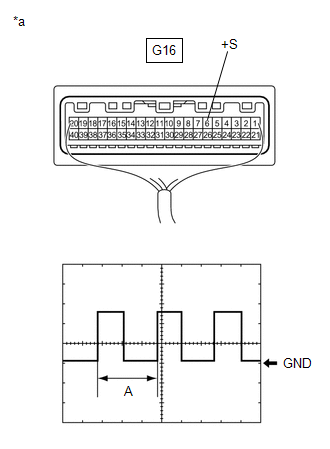DESCRIPTION The combination meter assembly receives the vehicle speed signal from this circuit. The wheel speed sensors produce an output that varies according to the vehicle speed. The wheel speed sensor output is received by the skid control ECU (brake booster with master cylinder assembly) which uses this information to create the vehicle speed signal*. The vehicle speed signal consists of pulses sent to the combination meter assembly from the skid control ECU (brake booster with master cylinder assembly). To create this signal, 12 V is output from IG2 which is behind a resistor in the combination meter assembly. This voltage is sent to the skid control ECU (brake booster with master cylinder assembly). The pulse signal is created by switching the transistor in the skid control ECU (brake booster with master cylinder assembly) on and off, making the voltage on the wire drop to 0 V. A similar system is used for the output of this signal from the combination meter assembly via terminal +S. A voltage of 12 V is applied to terminal +S from each ECU or relay that is connected to this terminal. The transistor in the combination meter assembly is controlled by the signal from the skid control ECU (brake booster with master cylinder assembly). When this transistor is turned on, this transistor makes the voltage supplied by the various ECUs (via their respective internal resistors) drop to 0 V. Each ECU connected to terminal +S of the combination meter assembly controls its respective system based on this pulse signal.
HINT: This circuit is used for the systems connected to terminal +S. This signal is not used for combination meter assembly operation. Combination meter assembly components such as the speedometer operate using data received via CAN communication. WIRING DIAGRAM  CAUTION / NOTICE / HINT NOTICE: When replacing the combination meter assembly, always replace it with a new one. If a combination meter assembly which was installed to another vehicle is used, the information stored in it will not match the information from the vehicle and a DTC may be stored. PROCEDURE

(a) Disconnect the A35 skid control ECU (brake booster with master cylinder assembly) connector. (b) Measure the voltage according to the value(s) in the table below. Standard Voltage:

(a) Connect the A35 skid control ECU (brake booster with master cylinder assembly) connector. (b) Remove the combination meter assembly with the connector(s) still connected. (c) Check the signal waveform according to the condition(s) in the table below.
OK: The waveform is similar to that shown in the illustration. HINT: When the system is functioning normally, one wheel revolution generates 4 pulses. As the vehicle speed increases, the width indicated by (A) in the illustration narrows.
(a) Disconnect the G16 combination meter assembly connector. (b) Disconnect the G38 vehicle approaching speaker controller connector. (c) Disconnect the A39 parking brake ECU (brake actuator assembly) connector. (d) Disconnect the G40 certification ECU (smart key ECU assembly) connector. (e) Disconnect the G9 DCM (telematics transceiver) connector. (f) Disconnect the G3 radio and display receiver assembly connector. (g) Disconnect the G8 stereo component amplifier assembly*1 connector. (h) Disconnect the G13 navigation ECU*2 connector. (i) Measure the resistance according to the value(s) in the table below. Standard Resistance:

(a) Connect the G16 combination meter assembly connector. (b) Connect a positive (+) lead from the auxiliary battery to any of the following terminals:
(c) Check the signal waveform according to the condition(s) in the table below.
OK: The waveform is similar to that shown in the illustration. HINT:
(a) Disconnect the G16 combination meter assembly connector. (b) Measure the resistance according to the value(s) in the table below. Standard Resistance:
|
Toyota Avalon (XX50) 2019-2022 Service & Repair Manual > Luggage Compartment Door: Reassembly
REASSEMBLY PROCEDURE 1. INSTALL REAR SPOILER SUB-ASSEMBLY (w/ Rear Spoiler) Click here 2. INSTALL LICENSE PLATE LIGHT ASSEMBLY Click here HINT: Use the same procedure as for the LH side. 3. INSTALL TELEVISION CAMERA ASSEMBLY Click here 4. INSTALL LUGGAGE ELECTRICAL KEY SWITCH Click here 5. INSTALL L ...